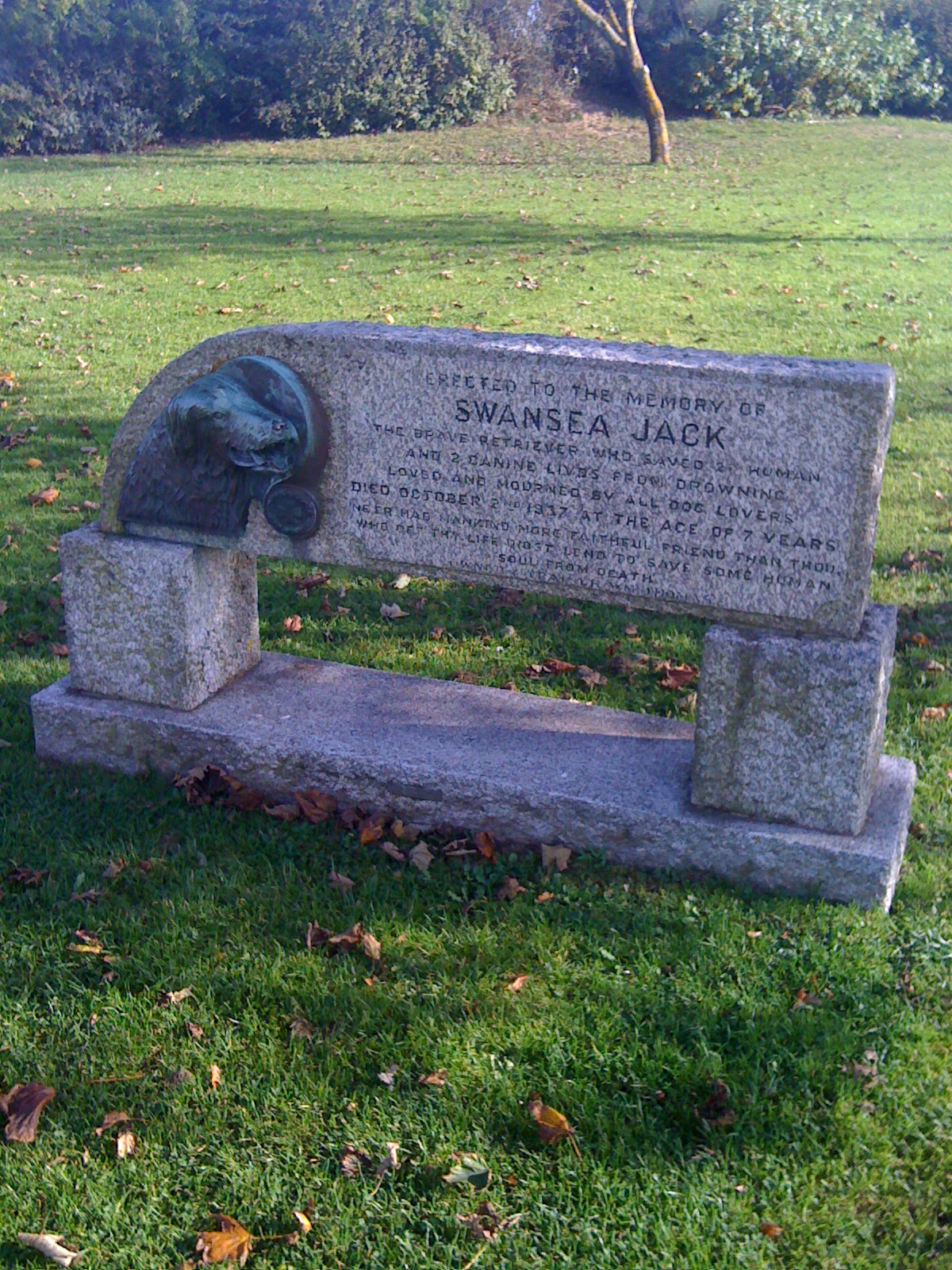The birthplace of such breeds as the Welsh Corgi, the Welsh Springer Spaniel and the Welsh Sheepdog, Wales is also home to several famous dog sculptures. In DogTipper’s ongoing look at the link between fine art and our four-legged friends, we shine a spotlight on depictions of dogs in the country known as “the land of song” that have put a collective song in the hearts of animal lovers.
People Like Us
Petted by passersby to the point that it now boasts a golden sheen, a bronze depiction of a dog greets visitors at the popular waterfront shopping and dining district of Mermaid Quay in Cardiff Bay. Created by the late sculptor John Clinch in 1993, the pooch is part of a sculpture dubbed “People Like Us,” which pays homage to the harmonious combination of cultures when the area was known as Tiger Bay.
Cardiff People First, an organization which champions the rights of Welsh people faced with learning disabilities, offers a look at the popular tourist site:
Gelert
Nine centuries have passed since a dog named Gelert breathed his last, but his sad tale touches the hearts of tourists visiting the Snowdonia village of Beddgelert to this day.
Legend states that Gelert was given to Llewelyn the Great, Prince of Gwynedd by King John of England. A loyal canine companion who often accompanied his human on hunting expeditions, one day the dog was nowhere to be found when the prince decided to stalk prey. Returning from his excursion, he discovered his faithful four-legged friend back at home, but something was wrong– there was blood on Gelert’s mouth. Finding his child’s crib empty, the prince presumed the worst, and his emotional turmoil guided his hand to his sword. Plunging his weapon into the dog he believed had betrayed him, as Gelert passed away the prince heard the cries of his child. His baby boy had been saved from a predatory wolf by the steadfast dog who lay dead at his feet.
Is the tale of Gelert fact or fiction? Although the veracity of the story has been disputed, many artists have immortalized Gelert’s faithfulness. The 19th century artist Charles Burton Barber (whose works include such classic paintings as Queen Victoria and John Brown and A Special Pleader) picked up his brush to portray Gelert protecting the prince’s infant son, while 18th century illustrator Byam Shaw was moved to produce a painting of Gelert in his final moments. A sculptor has also created an image of Gelert’s supposed likeness which stands not far from his grave– a site where today both people and pets come to pay their respects.

By en:User:Necrothesp – http://upload.wikimedia.org/wikipedia/en/e/ef/Gelert%27s_Grave.jpg, CC BY-SA 3.0, Link
Swansea Jack
The residents of Wales’ second largest city are proud to be called ‘Swansea Jacks.’ While some believe that the sobriquet is a salute to local sailors (known as “Jack Tars”) from Swansea’s past and others think the moniker is a tribute to the area’s coal miners (due to the fact that their tin lunch boxes were referred to as Jacks), in the eyes of dog lovers the nickname is a loving nod to a brave black retriever.
Born in 1930, Swansea Jack– who lived with his human William Thomas near the River Tawe– made a big splash in canine history during his lifetime by rescuing 27 drowning people and two dogs. His heroism was rewarded with a ‘Bravest Dog of the Year’ awarded presented by the London Star; a silver cup presented by the Lord Mayor of London and two bronze medals from the charity now known as Dogs Trust. His memory was also celebrated in 2000 when the NewFound Friends of Bristol dubbed Swansea Jack ‘Dog of the Century.’
The self-appointed lifeguard lost his life on October 2, 1937 at the age of seven when he ingested rat poison. However, the city’s love for the stout-hearted Spot lives on thanks to the Swansea Jack Memorial. Located near St. Helen’s Rugby Grounds on the Promenade, the bronze and granite monument has been a reminder of the retriever’s courage since it was erected in 1938.

By Rhodri77 – Own work, CC BY-SA 3.0, Link
Acton Park Dogs
Acton Hall, the stately manor that this wooden dog once guarded over, has been demolished and its three wooden canine companions have been lost to the mist of time. Built in 1820, the gateway to the former home of the Cunliffe family is all that remains, and since 1982 four fiberglass reproductions of the original wooden greyhounds have kept silent vigil atop the neoclassical entrance as visitors to Acton Park walk by.
Created to showcase Sir Foster Cunliffe’s love of the breed, the remaining original greyhound statue– which today can be seen at the Wrexham County Borough Museum– is a symbol of the city of Wrexham.
- Arthur The King Movie Showcases Rescue of Stray Dog - March 12, 2024
- 2024 Bark in the Park Major League Baseball Games - March 11, 2024
- Meghan Markle Celebrates Shelter Expansion - February 22, 2024
